 W
WAbusa'id Abolkhayr or Abū Saʿīd Abū'l-Khayr, also known as Sheikh Abusaeid or Abu Sa'eed, was a famous Persian Sufi and poet who contributed extensively to the evolution of Sufi tradition.
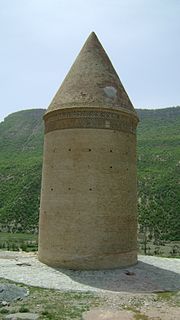 W
WAbu Ja'far Muhammad, was the ruler of the Bavand dynasty from an unknown date until his capture and defeat by the Kakuyids in 1027.
 W
WAbu Kalijar Marzuban was the Buyid amir of Fars (1024–1048), Kerman (1028–1048) and Iraq (1044–1048). He was the eldest son of Sultan al-Dawla.
 W
WAbu Nasr Muhammad was the ruler of Gharchistan from an unknown date to the 990s. He was from an Iranian princely family which ruled Gharchistan, and bore the title of Shar. Although the family had already ruled the region before Abu Nasr Muhammad, he is the first known member of the family. His father was named Asad, and may have ruled before him.
 W
WMuhammad bin Ismail Nashtakin ad-Darazi was an 11th-century Ismaili preacher and early leader of the Druze faith who was labeled a heretic in 1016 and subsequently executed in 1018 by the Fatimid Caliph Al-Hakim bi-Amr Allah.
 W
WAhmad Ibn Abolhasan Jāmi-e Nāmaghi-e Torshizi better known as Sheikh Ahhmad-e Jami or Sheikh Ahmad-i Jami or Sheikh Ahmad-e jam or Sheikh-e Jam or simply Ahmad-e Jam was a Persian Sufi, Sufi writer, mystic and poet. His mazar (tomb) is located in Torbat-e Jam.
 W
WAbū Ḥātim al-Muẓaffar al-Isfazārī was a Persian Muslim mathematician from Khurasan. According to Ibn al-Athir and Qutb al-Din al-Shirazi, he worked in the Seljuq observatory of Isfahan. Nezami Aruzi met him in Balkh in in 1112 or 1113.
 W
WAbu Nasr Khusrau Firuz, better known by his laqab of Al-Malik al-Rahim was the last Buyid amir of Iraq. He was the son of Abu Kalijar.
 W
WAbu Ismaïl Abdullah al-Herawi al-Ansari or Abdullah Ansari of Herat (1006–1088) also known as Pir-i Herat "Sage of Herat", was a Muslim Sufi saint who lived in the 11th century in Herat. One of the outstanding figures of 5th/11th century Khorasan, Ansari was a commentator of the Qur'an, traditionist, polemicist, and spiritual master, known for his oratory and poetic talents in Arabic and Persian.
 W
WIbn Sina, also known as Abu Ali Sina, Pur Sina (پورسینا), and often known in the West as Avicenna, was a Persian polymath who is regarded as one of the most significant physicians, astronomers, thinkers and writers of the Islamic Golden Age, and the father of early modern medicine. Sajjad H. Rizvi has called Avicenna "arguably the most influential philosopher of the pre-modern era". He was a Muslim Peripatetic philosopher influenced by Aristotelian philosophy. Of the 450 works he is believed to have written, around 240 have survived, including 150 on philosophy and 40 on medicine.
 W
WAbu Nasr Firuz Kharshadh, better known by his laqab of Baha al-Dawla was the Buyid amir of Iraq (988–1012), along with Fars and Kerman (998–1012). His early reign was dominated by struggles with his rival relatives over control of the western Persian provinces, but by 998 he managed to establish his supremacy over the Buyid confederation. His reign nevertheless saw the increasing encroachment of neighbouring powers on Buyid territory, and marks the beginning of the decline of the Buyids' power. He was the third son of 'Adud al-Dawla.
 W
WAbu al-Hasan Bahmanyar ibn al-Marzuban, better simply known as Bahmanyar was an Iranian scholar, who is mainly known as one of the most prominent pupils of Avicenna.
 W
WBorena was a sister of the Alan king Durgulel "the Great", and the Queen consort of Georgia, as the second wife of Bagrat IV.
 W
WAmir Abu'l-Abbas Fadl, better known as Fadluya, was an Iranian tribal chieftain of the Shabankara in Fars. He was the son of Ali ibn Hasan ibn Ayyub of the Ramani clan of the Shabankara, and was the founder of the Shabankara dynasty in Fars, which lasted sporadically from 1030 to 1355. The Shabankaras occupied the mountain region of Kuhgiluya and maintained a great scale of independence.
 W
WFakhruddin As'ad Gurgani, also spelled as Fakhraddin Asaad Gorgani, was an 11th-century Persian poet. He versified the story of Vis and Rāmin, a story from the Arsacid (Parthian) period. The Iranian scholar Abdolhossein Zarrinkoub, however, disagrees with this view, and concludes that the story has its origins in the 5th-century Sasanian era. Besides Vis and Rāmin, he composed other forms of poetry. For example, some of his quatrains are recorded in the Nozhat al-Majales.
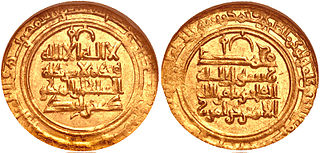 W
WAbu Mansur Faramurz, mostly known as Faramurz, was the Kakuyid Emir of Isfahan. He was the eldest son of Muhammad ibn Rustam Dushmanziyar. He was defeated by Tughril in 1051 and became his vassal. Faramurz later died after 1063, probably in the 1070s.
 W
WFariburz ibn Sallar, better simply known as Fariburz I (فریبرز), was the sixteenth Shah of Shirvan, ruling from 1063 to 1096. His reign saw many major political balance changes in Caucasus, including expansion by the Seljuqs. He was considered a ruler with great diplomatic skills, and his kingdom extended from Mughan to Kumuk and Alania.
 W
WAbul-Qâsem Ferdowsi Tusi, or just Ferdowsi was a Persian poet and the author of Shahnameh, which is one of the world's longest epic poems created by a single poet, and the national epic of Greater Iran. Ferdowsi is celebrated as one of the most influential figure in Persian literature and one of the greatest in the history of literature.
 W
WAl-Ghazali was a Persian philosopher who was one of the most prominent and influential Muslim philosophers, theologians, jurists, and mystics, of Sunni Islam.
 W
WʿAbdul Qādir Gīlānī, (Persian: عبدالقادر گیلانی, Arabic: عبدالقادر الجيلاني, Turkish: Abdülkâdir Geylânî, known by admirers as Muḥyī l-Dīn Abū Muḥammad b. Abū Sāliḥ ʿAbd al-Qādir al-Gīlānī al-Ḥasanī wa'l-Ḥusaynī, was a Hanbali Sunni Muslim preacher, ascetic, mystic, jurist, and theologian, who was known for being the eponymous founder of the Qadiriyya tariqa of Sufism.
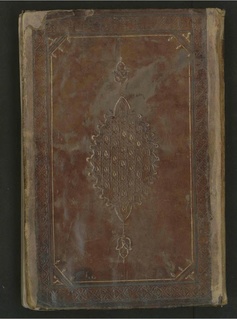 W
WIbn Abi Sadiq al-Naishaburi, Abu al-Qasim ‘Abd al-Rahman ibn ‘Ali was an 11th-century Persian physician from Nishapur in Khorasan. He was a pupil of Avicenna. As he composed a popular commentary on the Aphorisms of Hippocrates, he was known in some circles as "the second Hippocrates". Ismail Gorgani, the author of Zakhireye Khwarazmshahi, completed his studies under his guidance.
 W
WAbu Ahmad Wali 'l-Dawla Khalaf ibn Ahmad was the Saffarid amir of Sistan from 963 until 1002. Although he was renowned in the eastern Islamic world as a scholar, his reign was characterized by violence and instability, and Saffarid rule over Sistan came to an end with his deposition.
 W
WOmar Khayyam was a Persian mathematician, astronomer, philosopher, and poet. He was born in Nishabur, in northeastern Iran, and spent most of his life near the court of the Karakhanid and Seljuq rulers in the period which witnessed the First Crusade.
 W
WKhusrau Shah was the king of the Justanids from 972 to ca. 1004. He was the son and successor of Manadhar.
 W
WAbu Mo’in Hamid ad-Din Nasir ibn Khusraw al-Qubadiani or Nāsir Khusraw Qubādiyānī Balkhi also spelled as Nasir Khusrow and Naser Khosrow was a Persian poet, philosopher, Isma'ili scholar, traveler and one of the greatest writers in Persian literature. He was born in Qabodiyon, a village in Bactria in the ancient Greater Iranian province of Khorasan, now in modern Tajikistan and died in Yamagan, now Afghanistan.
 W
WMahsati Ganjavi (Persian: مهستی گنجوی), was a 12th-century Persian poet. Mahsati (مهستی) is a compound of two Persian words "Mah/Maah" (Moon) and "Sati" (Lady). The word appears in the works of Sanai, Nizami, Attar, Rumi, and Saadi,. As an eminent poet, she was composer of quatrains (ruba'is).
 W
WFalak al-Ma'ali Manuchihr, better known as Manuchihr, was the ruler of the Ziyarids. He was the son of Qabus.
 W
WAbul Muzaffar Manuchehr was the seventeenth independent Shah of Shirvan.
 W
WMuhammad ibn Rustam Dushmanziyar, also known by his laqab of Ala al-Dawla Muhammad, was a Daylamite military commander who founded in 1008 the short-lived but important independent Kakuyid dynasty in Jibal. He is also known as Pusar-i Kaku, Ibn Kakuyeh, Ibn Kakuya, and Ibn Kaku, which means maternal uncle in the Deylami language, and is related to the Persian word "kaka". Muhammad died in September 1041 after having carved out a powerful kingdom which included western Persia and Jibal. However, these gains were quickly lost under his successors.
 W
WMuhammad ibn Suri was the king of the Ghurid dynasty from the 10th-century to 1011. During his reign, he was defeated by the Ghaznavid emperor Mahmud of Ghazni and his domains were conquered. According to Minhaj-us-Siraj, Muhammad was captured by Mahmud of Ghazni, made prisoner along with his son, and taken to Ghazni, where Muhammad died by poisoning himself. Subsequently, the whole population of Ghuristan was taught the precepts of Islam and converted from Mahayana Buddhism to Islam. Mu'izz ad-Din Muhammad of Ghor later overthrew the Ghaznavid Empire in 1186 and conquered their last capital at Lahore.It is said that Muhammad was a great king and most of the territories of Ghor were in his possession. But as many of the inhabitants of Ghor of High and low degree had not yet embraced Islam, there was constant strife among them. The Saffarids came from Nimruz to Bust and Dawar, Ya'qub al-Saffar overpowered Lak-Lak, who was the chief of Takinabad, in the country of Rukhaj. The Ghorians sought the safety in Sara-sang and dwelt there in security but even among them hostilities constantly prevailed between the Muslims and the infidels. One castle was at war with another castle, and their feuds were unceasing; but owing to the inaccessibility of the mountains of Rasiat, which are in Ghor no foreigner was able to overcome them, and Muhammad was the head of all the Mandeshis.
 W
WHakim Abul-Majd Majdūd ibn Ādam Sanā'ī Ghaznavi, more commonly known as Sanai, was a Persian poet from Ghazni who lived his life in the Ghaznavid Empire at the time of its golden age, in medieval Khorasan, which is now located in Afghanistan. He was born in 1080 and died between 1131 and 1141.
 W
WShahriyar IV, also known by his honorific title Husam al-Dawla, was the king of the Bavand dynasty of Mazandaran, ruling from 1074 to 1114.
 W
WKiya Abu'l-Fawaris Shahriyar ibn Abbas ibn Shahriyar, better simply known as Shahriyar ibn Abbas was a Bavandid prince, who is solely known for being mentioned in the inscription on the mausoleum in Savadkuh, known as the Lajim Tower. The mausoleum was constructed in 1022, where he was most already likely dead. The person who ordered the construction was his mother Chihrazad, whilst the name of the architect was a certain al-Husayn ibn Ali. In the inscription, Shahriyar is labeled as "Client of the Commander of the Faithful". However, he is not called ispahbad, which was the title used by the Bavandid rulers, and thus it is dubious if he ever ruled.
 W
WAbu Taher was the Buyid ruler of Hamadan from 997 to 1021. He was the son of Fakhr al-Dawla.
 W
WQabus ibn Wushmagir (full name: Abol-Hasan Qābūs ibn Wušmagīr ibn Ziyar Sams al-maʿālī, ابوالحسن قابوس بن وشمگیر بن زیار, شمس المعالی; was the Ziyarid ruler of Gurgan and Tabaristan in medieval Iran. His father was Vushmgir and his mother was a daughter of the Bavandi Ispahbad Sharwin II.
 W
WAl-Mu'ayyad fid-din Abu Nasr Hibat Allah b. Abi 'Imran Musa b. Da'ud ash-Shirazi was an 11th-century Isma'ili scholar, philosopher-poet, preacher and theologian of Persian origin. He served the Fatimid Caliph-Imām al-Mustansir Billah as a Da'i in varying capacities, eventually attaining the highest rank of Bab al-Abwab "The Gate of Gates" and Da'i al-du'at "Chief Missionary" in the Fatimid Da‘wah. In his theological and philosophical writings he brought the Isma'ili spiritual heritage to its pinnacle.
 W
WAbu'l-Hasan Ali ibn Julugh Farrukhi Sistani, better known as Farrukhi Sistani was one of the most prominent Persian court poets in the history of Persian literature. Initially serving a dehqan in Sistan and the Muhtajids in Chaghaniyan, Farrukhi entered the service of the Ghaznavids in 1017, where he became the panegyrist of its rulers, Mahmud and Mas'ud I, as well as numerous viziers and princes.
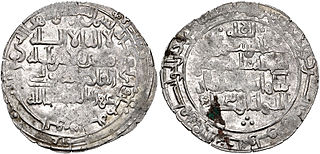 W
WAbu Shuja, better known by his laqab of Sultan al-Dawla, was the Buyid amir of Fars (1012–1024) and Iraq (1012–1021). He was the son of Baha' al-Dawla.
 W
WBaba Tahir or Baba Taher Oryan Hamadani was an 11th-century Persian dervish poet from Hamadan, Iran who lived during the reign of Tugril of the Seljuk dynasty over Iran. This is almost all that is known of him as he lived a mysterious lifestyle. Although prefix "Baba" has been thought as part of his name in all known sources, his nickname "Oryan"( meaning 'The Naked' ) did not appear until about 17th-century.The nickname was probably attributed to him because he seemed to lead a very spiritual and stoic lifestyle and thus was figuratively not clothed with worldly and material needs. His poetry is written in the Hamadani dialect of the Persian language. According to L. P. Elwell-Sutton he probably wrote in the Hamadani dialect, adding: "Most traditional sources call it loosely Luri, while the name commonly applied from an early date to verses of this kind, Fahlaviyat, presumably implies that they were thought to be in a language related to the Middle Persian language. Rouben Abrahamian however found a close affinity with the dialect spoken at the present time by the Jews of Hamadan." According to The Cambridge History of Iran, Baba Tahir spoke a certain Persian dialect.
 W
WAbū Manṣūr al-Thaʿālibī, Abd al-Mālik ibn Muḥammad ibn Ismā’īl, (961–1038), was a writer of Persian or Arab ethnicity, native of Nishapur, Persia, famous for his anthologies and collections of epigrams. As a writer of prose and verse in his own right, distinction between his and the work of others is sometimes lacking, as was the practice of writers of the time.
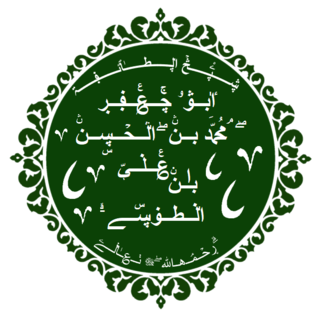 W
WShaykh Tusi, full name Abū Ja'far Muḥammad Ibn Ḥasan Tūsī, known as Shaykh al-Taʾifah was a prominent Persian scholar of the Twelver school of Shia Islam. He became known as "Sheikh of the Sect ," authored two of the four main Shi'i books of hadith, Tahdhib al-Ahkam and al-Istibsar, and is believed to have founded the Najaf Hawza. He also counts as the founder of Shia jurisprudence.
 W
WAbul Qasim Hasan Unsuri Balkhi was a 10-11th century Persian poet. ‘Unṣurī is said to have been born in Balkh, today located in Afghanistan, and he eventually became a poet of the royal court of Mahmud of Ghazni, and was given the title Malik-us Shu'ara under Sultan Maḥmūd of Ghazna. His Divan is said to have contained 30,000 distichs, of which only 2500 remain today. It includes the romance epic Vāmiq u ‘Adhrā. The following dialog between an eagle and a crow, translated by Iraj Bashiri, is an example. In it the King of Poets, Unsuri, compares his own status vis-a-vis that of a young poet who has joined the court recently.